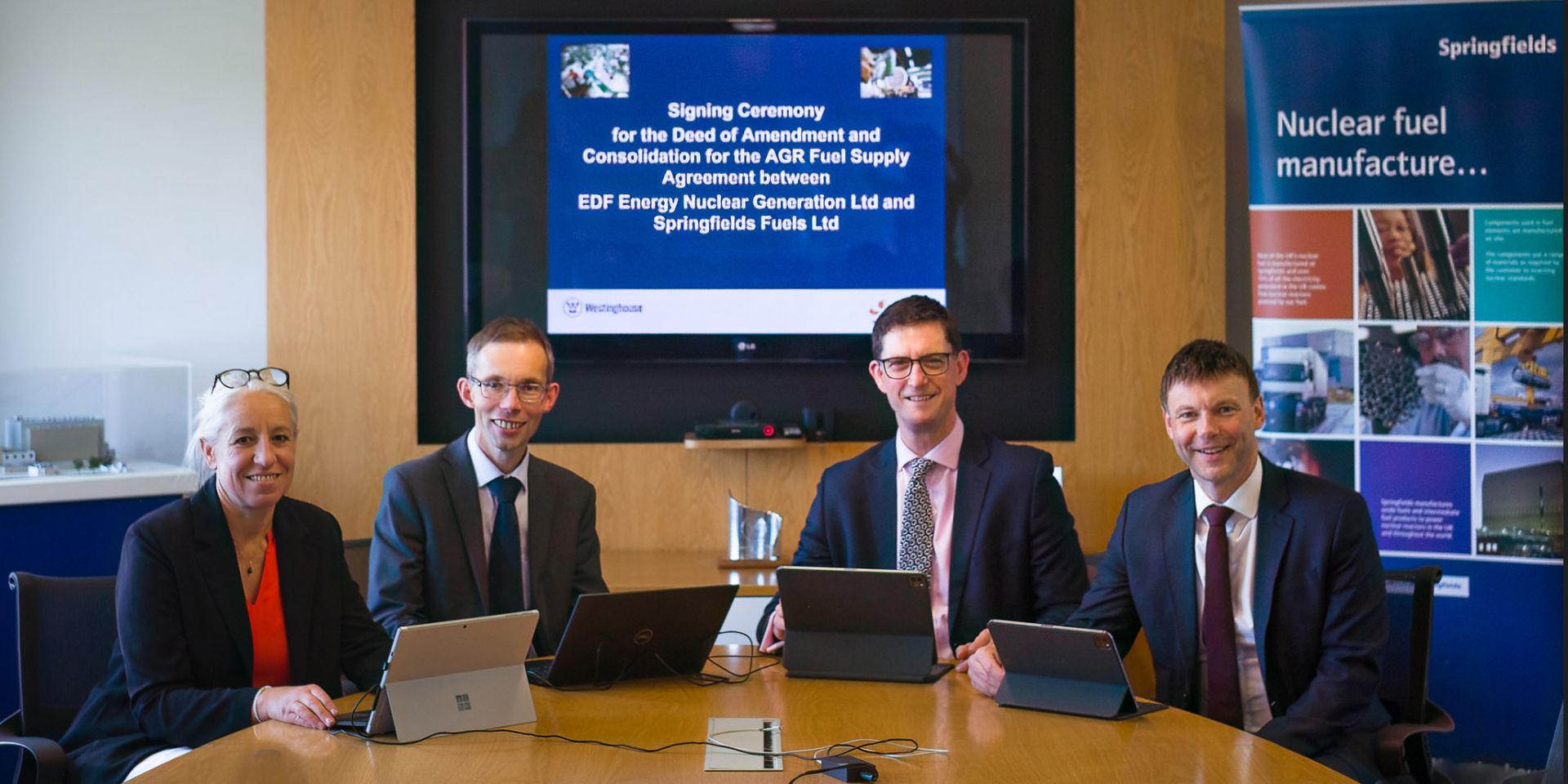EDF gives lifeline to U.K. nuclear plants

French energy supplier Électricité de France announced this week it will invest $1.7 billion to keep its U.K. fleet in production through 2026.


French energy supplier Électricité de France announced this week it will invest $1.7 billion to keep its U.K. fleet in production through 2026.

Westinghouse Electric Company has signed a contract extension with EDF Energy to supply fuel for the United Kingdom’s advanced gas-cooled reactor (AGR) fleet, the American firm announced yesterday.
EDF Energy, owner and operator of the United Kingdom’s nuclear reactor fleet, announced last week that it intends to keep its Hartlepool and Heysham 1 stations in operation to March 2026—two years past their previously scheduled 2024 retirement dates. EDF added that an additional 12 months of operation beyond 2026 is being contemplated.

Another calendar year has passed. Before heading too far into 2023, let’s look back at what happened in 2022 for the American Nuclear Society and the nuclear community. In today's post that follows, we have compiled from Nuclear News and Nuclear Newswire what we feel are the top nuclear news stories from January through March 2022.
Stay tuned this week for the top stories from the rest of the past year.
But first, click here for some of ANS’s activities for 2022.

By all accounts the most productive nuclear power plant in British history, Somerset’s Hinkley Point B station closed for good on August 1, with the shutdown of its B1 unit, a 485-MWe advanced gas-cooled reactor. (The plant’s B2 unit, a 480-MWe AGR, was shuttered early last month.)
The station employed around 500 staff and 250 contractors and contributed approximately £40 million (about $48.7 million) per year to the Somerset economy, according to EDF Energy, owner and operator of the United Kingdom’s power reactor fleet.

Hands
The U.K. government has confirmed its selection of the high-temperature gas-cooled reactor (HTGR) for Britain’s £170 million (about $236 million) Advanced Modular Reactor Demonstration Program.
Greg Hands, minister for energy, clean growth, and climate change, delivered the news on December 2 via a speech at the Nuclear Industry Association’s annual conference. “Following evaluation of responses received,” Hands said, “I’m pleased to announce today that we will focus on HTGRs as the technology choice for the program moving forward—with the ambition for this to lead to a demonstration by the early 2030s.”
NNL approved: “As we look to the future and the part we play as a scientific superpower, the U.K.’s unparalleled experience in gas-cooled technologies makes HTGRs the common-sense choice for pursuing advanced nuclear,” said Paul Howarth, chief executive officer at the United Kingdom’s National Nuclear Laboratory. “Following announcements already made on financing for the next stage of the Rolls-Royce SMR program and the proposed Nuclear Energy (Financing) Bill to make large-scale plants more achievable, the U.K. is primed once more to be a global leader in nuclear technologies—large, small, and advanced.”

Unit B1 at Scotland’s two-unit Hunterston B nuclear power plant was taken off line for good on November 26 after nearly 46 years of operation. A 490-MWe advanced gas-cooled reactor, the unit entered commercial operation in June 1976. Its companion AGR, Unit B2, which entered operation in March 1977, is scheduled for retirement in January.

The U.K. government and EDF have agreed to improved arrangements for the decommissioning of Britain’s seven advanced gas-cooled reactor nuclear power plants, which are due to reach the end of their operational lives this decade.
The global engineering company Jacobs, under a contract with Radioactive Waste Management Ltd. (RWM), will be studying the release of radioactivity from irradiated graphite taken from reactor core samples at the United Kingdom’s nuclear power plants. According to Jacobs, the research will support RWM, a subsidiary of the U.K. government’s Nuclear Decommissioning Authority, in its analysis of graphite behavior and the options for graphite waste management in the future.